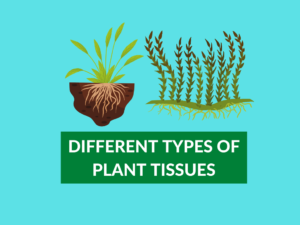What is sporophyte?
A sporophyte is the diploid multicellular stage in a plant’s life cycle that produces spores. It is the dominant phase in vascular plants, including ferns, gymnosperms, and angiosperms. The sporophyte is responsible for producing specialized structures called sporangia, which contain spore cells.
Examples of sporophyte:
- In ferns, sporophytes are the leafy plants we see commonly.
- In conifers, sporophytes are the familiar tall trees, such as pines and spruces.
- In flowering plants, sporophytes are represented by various structures like trees, shrubs, and flowers.
Uses of sporophyte:
The sporophyte stage plays a crucial role in plant reproduction and survival. It produces spores, which serve as important dispersal units for plants. Spore production ensures the genetic diversity and distribution of plant species. Additionally, sporophytes provide structural support, enabling plants to grow tall, capture sunlight, and carry out photosynthesis.
What is gametophyte?
A gametophyte is the haploid multicellular stage in a plant’s life cycle that produces gametes (reproductive cells). It is the dominant phase in bryophytes (mosses, liverworts, and hornworts) and some other non-vascular plants. Unlike sporophytes, gametophytes are relatively small and inconspicuous.
Examples of gametophyte:
- In mosses, gametophytes are the leafy structures seen covering rocks and soil.
- In liverworts, gametophytes appear as flattened bodies attached to the substrate.
- In ferns, gametophytes are small heart-shaped structures found on the ground.
Uses of gametophyte:
Gametophytes are responsible for producing gametes, which are necessary for sexual reproduction in plants. They produce both male (sperm-producing) and female (egg-producing) gametes. Through fertilization, the fusion of these gametes leads to the formation of a new sporophyte generation.
Differences Table
| Difference Area | Sporophyte | Gametophyte |
|---|---|---|
| Chromosome Number | Diploid (2n) | Haploid (n) |
| Size | Larger and more complex | Smaller and simpler |
| Dominance | Dominant phase in vascular plants | Dominant phase in bryophytes and some non-vascular plants |
| Reproduction | Produces spores | Produces gametes |
| Structure | Multicellular with specialized organs | Relatively simple, often one cell layer thick |
| Location | Usually above ground, in the form of trees, shrubs, etc. | Often found on or near the ground |
| Stages | Prior to gametophyte in the life cycle | Precedes the sporophyte in the life cycle |
| Genetic Combination | Produces offspring with genetic variation through meiosis and fertilization | Allows fusion of different gametes for genetic diversity |
| Growth Pattern | Grows by cell division and enlargement | Grows by cell division and differentiation |
| Environmental Adaptation | Adapted to terrestrial environments | Often require moist environments for survival |
Conclusion:
In summary, the sporophyte and gametophyte represent different stages in a plant’s life cycle. The sporophyte is the diploid stage responsible for producing spores and dominates in vascular plants, while the gametophyte is the haploid stage producing gametes and dominates in bryophytes and some non-vascular plants.
Knowledge Check:
- Which stage in a plant’s life cycle is diploid (2n)?
- What is the dominant phase in bryophytes and some non-vascular plants?
- What do sporophytes produce?
- In which type of plants are gametophytes relatively simple and one cell layer thick?
- Which stage precedes the sporophyte in the life cycle of plants?
- What is the chromosome number of sporophytes?
- Where are gametophytes commonly found in mosses?
- What is the main purpose of gametophytes?
- Which stage is larger and more complex?
- Which stage grows by cell division and enlargement?
Sporophyte
Gametophyte
Spores
Bryophytes
Gametophyte
Diploid (2n)
On rocks and soil
Producing gametes for sexual reproduction
Sporophyte
Sporophyte
Related Topics:
- Similarities between sporophyte and gametophyte
- Life cycle of plants: Alternation of generations
- Adaptations of plants to terrestrial environments
- Evolutionary significance of sporophyte and gametophyte stages



